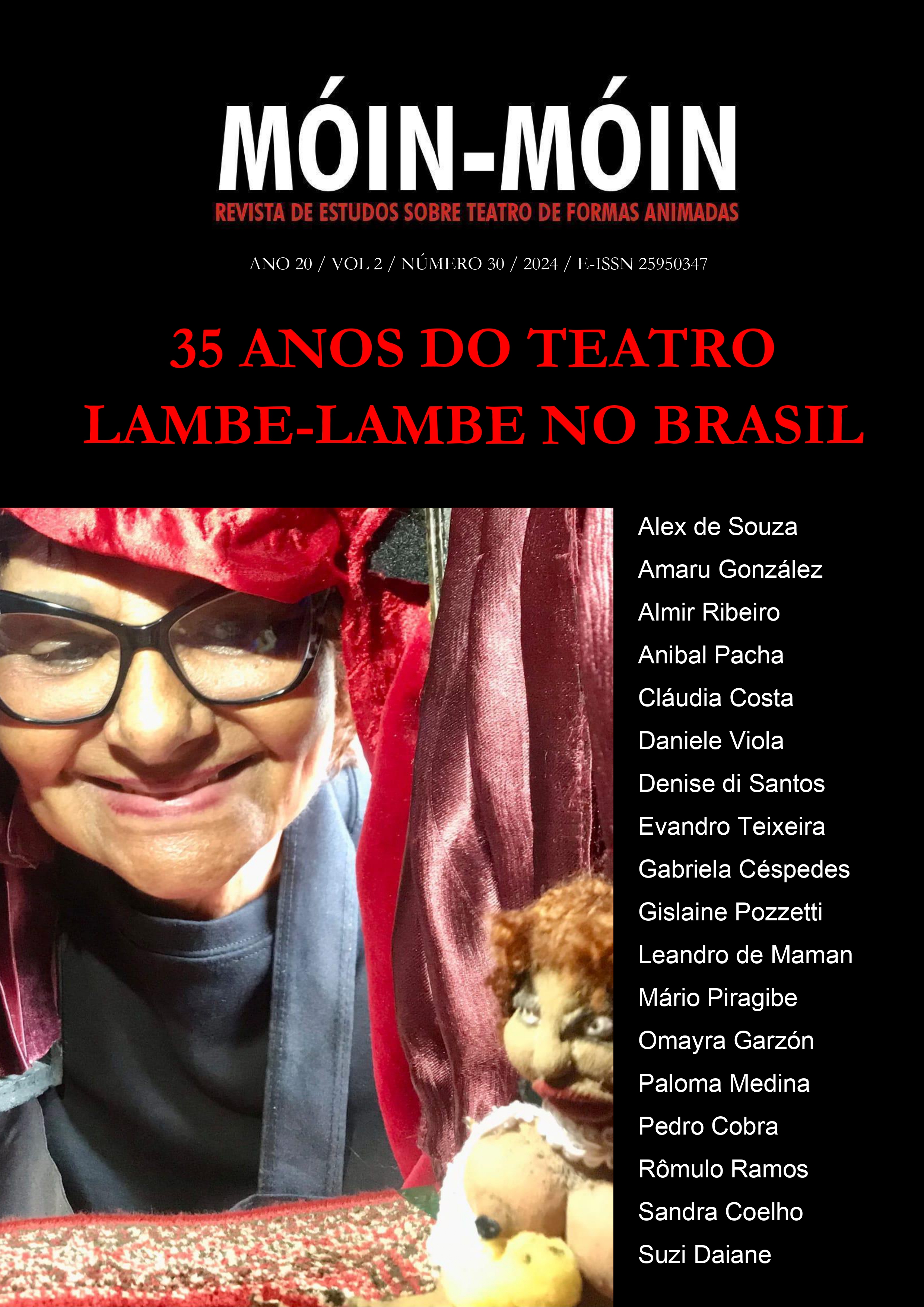Gordon Craig and the mask of method: Robinson Crusoe and his pyre of a thousand ships
DOI:
https://doi.org/10.5965/2595034702302024261Keywords:
theater, Edward Gordon Craig, Robinson Crusoé, loneliness, maskAbstract
Edward Gordon Craig was fascinated by masks. He collected, catalogued, but also researched its expressive and pedagogical possibilities. In Craig, the mask went beyond its concrete meaning to become a mechanism for investigation and deepening his research. The creation of personas, hidden under pseudonyms, was part of this artifice of creating a polyphony of voices created by himself, so that each line of reasoning could be carried to the end. On this contradiction, Craig built his heterodox and revolutionary thought.
Lonely and contradictory characters, like Hamlet, satisfied him most of all. But his encounter with Robinson Crusoe, by Daniel Defoe, was symbolic not only because it reflected his belief in the mythology of the man who builds a civilization with his own hands, but also in that of the shipwrecked man, abandoned in a desolate and dark environment, like that of second great war that was already announced.
This study deals with what I called a masking methodology, and due to the solitary and civilizing nature that this methodology implies, I use as a basis for reflection Craig's project of illustrating with engravings a publication of the novel Robinson Crusoe, by Daniel Defoe. Craig identified with the loneliness of Crusoe and Hamlet, and with their ability, despite being alone, to be many.
Downloads
References
ARENDT, Hannah. Origens do Totalitarismo. São Paulo, ed. Martins Fontes, 1998.
BACHELARD, Gastón. O Direito de Sonhar. Rio de Janiro. Ed. Bertrand Brasil, 1994.
BALARDIM, Paulo. O fio transversal da animação. Móin-Móin - Revista de Estudos sobre Teatro de Formas Animadas, Florianópolis, v. 1, n. 06, p. 151–163, 2018. DOI: 10.5965/2595034701062009151. Disponível em: https://periodicos.udesc.br/index.php/moin/article/view/1059652595034701062009151. Acesso em: 17 mar. 2024.
BUNYAN, John. O Peregrino – A Viagem do Cristão à Cidade Celestial. Belo Horizonte: editora Jardim dos Livros, 2019.
CRAIG, Edward. Gordon Craig, the story of his life. Nova Iorque: Limelight editions, 1985
DECROUX, Étienne. Parole sul Mimo. Roma: Dino audino editore, 2003.
DEFOE, Daniel. Robinson Crusoé. São Paulo: Editora Schwarcz, 2001.
HALL, C.; LINDZEY, G. Teorias da personalidade. São Paulo: EPU, 1973.
JOYCE, James. Daniel Dafoe. Buffalo Studies: Published by State university of New York at Buffalo, 1964.
JUNG, Carl G. Os Arquétipos e o Inconsciente Coletivo. Petrópolis: ed. Vozes, 2002.
LÉVI-STRAUSS, Claude. A Via das Máscaras. Lisboa: Editorial Presença, 1979.
MAROTTI, Feruccio. Il mio teatro. Milão: ed. Feltrinelli, 1971.
RIBEIRO, Almir. Gordon Craig e a Pedagogia do Übermarionette. São Paulo: editora Giostri, 2016
Downloads
Published
How to Cite
Issue
Section
License
Copyright (c) 2024 Móin-Móin Magazine - Studies in the Art of Puppetry

This work is licensed under a Creative Commons Attribution 4.0 International License.
The readers are free to transfer, print and use the articles published in the Magazine, as long as there’s explicit mention to the author(s) and to Móin-Móin Magazine - Studies in Theater of Animated Forms and there are no changes on the original work. Any other use of the texts needs to be approved by the author(s) and the Magazine. In submitting an article to Móin-Móin Magazine - Studies in Theater of Animated Forms and have it approved, the author(s) agree to give away, without payments, the following rights to the Magazine: first publishing rights and the license for the Magazine to redistribute this article and its metadata to index and reference services that the editors consider appropriate.
The articles whose author(s) are identified represent the author’s point of view and not the official position of Móin-Móin Magazine. The author(s) commit to always mention the publication in the following way when publishing work in reference to the article published in Móin-Móin Magazine:
“This article was originally published by Móin-Móin Magazine volume (insert the volume), number (insert the number), in the year of (insert year) and can be accessed on: http://www.revistas.udesc.br/index.php/móin"
Plagiarism in any way constitutes an unethical publishing behavior and is unacceptable. Móin-Móin Magazine holds the right to use software or other plagiarism tracking methods to scan the submitted works.
![]()
This journal uses Attribution-NonCommercial 4.0 International– (CC BY NC 4.0).






